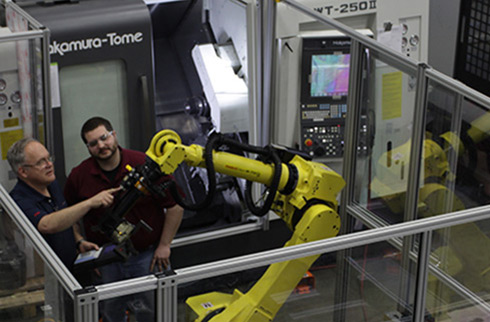
- Afrikaans
- Albanian
- Amharic
- Arabic
- Armenian
- Azerbaijani
- Basque
- Belarusian
- Bengali
- Bosnian
- Bulgarian
- Catalan
- Cebuano
- Corsican
- Croatian
- Czech
- Danish
- Dutch
- English
- Esperanto
- Estonian
- Finnish
- French
- Frisian
- Galician
- Georgian
- German
- Greek
- Gujarati
- Haitian Creole
- hausa
- hawaiian
- Hebrew
- Hindi
- Miao
- Hungarian
- Icelandic
- igbo
- Indonesian
- irish
- Italian
- Japanese
- Javanese
- Kannada
- kazakh
- Khmer
- Rwandese
- Korean
- Kurdish
- Kyrgyz
- Lao
- Latin
- Latvian
- Lithuanian
- Luxembourgish
- Macedonian
- Malgashi
- Malay
- Malayalam
- Maltese
- Maori
- Marathi
- Mongolian
- Myanmar
- Nepali
- Norwegian
- Norwegian
- Occitan
- Pashto
- Persian
- Polish
- Portuguese
- Punjabi
- Romanian
- Russian
- Samoan
- Scottish Gaelic
- Serbian
- Sesotho
- Shona
- Sindhi
- Sinhala
- Slovak
- Slovenian
- Somali
- Spanish
- Sundanese
- Swahili
- Swedish
- Tagalog
- Tajik
- Tamil
- Tatar
- Telugu
- Thai
- Turkish
- Turkmen
- Ukrainian
- Urdu
- Uighur
- Uzbek
- Vietnamese
- Welsh
- Bantu
- Yiddish
- Yoruba
pressure washer detailing cars
The Ultimate Guide to Pressure Washing for Car Detailing
When it comes to car detailing, maintaining a pristine exterior is essential for both aesthetics and protection. One of the most effective tools in a detailer's arsenal is the pressure washer. This powerful device can make the task of cleaning your vehicle faster and more effective, especially when it comes to removing dirt, grime, and other debris that traditional washing methods might miss. In this guide, we will explore the benefits of using a pressure washer for car detailing, the techniques you should employ, and some tips to maximize your results.
Why Use a Pressure Washer?
1. Efficiency Pressure washers significantly reduce the time it takes to wash a car. High-pressure water streams can knock off dirt and debris more effectively than a sponge or hose. This efficiency is crucial, especially for detailers who often handle multiple vehicles in a day.
2. Thorough Cleaning The concentrated force of a pressure washer can dislodge stubborn dirt and contaminants that cling to the vehicle's surface. This includes brake dust, tree sap, and even bird droppings, which can be difficult to remove with standard washing techniques.
3. Versatility Pressure washers come with various attachments and adjustable nozzles, allowing you to customize the pressure and spray pattern according to the specific needs of the job. Whether you’re rinsing off soap, applying a pre-soak solution, or cleaning wheel wells and undercarriages, a pressure washer can handle it all.
Techniques for Effective Car Detailing
Before you start using a pressure washer on your vehicle, it’s essential to follow certain techniques to ensure both safety and effectiveness.
1. Preparation Begin by removing any loose debris from the car's surface. Use a soft brush or microfiber cloth to tackle particularly dirty areas like the rims and wheel wells. This step helps to prevent scratching the paint during the wash.
pressure washer detailing cars

2. Appropriate Distance When using a pressure washer, maintain an appropriate distance—generally around 2 to 3 feet—from the vehicle’s surface. Too close, and you risk damaging the paint; too far, and the pressure may not be effective. Always test the pressure on a less-visible area of the car first.
3. Choose the Right Nozzle Different nozzles create various spray patterns and pressures. For washing the car, a wide-angle nozzle (25-40 degrees) is typically best. A narrower spray can be used for tougher spots but should be handled with caution.
4. Pre-soaking Using a foam cannon attachment with a soap solution can help break down tough grime before you rinse. This presoak allows the cleaning agents to work on the dirt for a few minutes before being blasted away.
5. Rinse with Care After washing, rinse the vehicle from top to bottom, ensuring that all soap is removed. Pay special attention to crevices and areas like under the hood, where grime can accumulate.
Safety Tips
While pressure washing is an effective way to detail a car, always prioritize safety
- Wear Protective Gear Safety glasses and gloves will protect you from splashes and debris. - Avoid Electrical Components Be cautious around sensitive areas like electrical connections, as high pressure can cause damage. - Check the Pressure Setting If your washer has adjustable pressure settings, use the lowest effective pressure to avoid damaging the paint.
Conclusion
Pressure washing is a game-changer in car detailing; it enhances efficiency and effectiveness while ensuring your vehicle looks its best. By following the techniques and safety tips outlined in this guide, anyone can utilize a pressure washer to achieve stunning results. Whether you're a professional detailer or a car enthusiast, investing time in mastering pressure washing techniques will pay off with a brilliantly clean vehicle that stands out from the crowd. Happy detailing!
-
Integrating Aqua Tunnel Car Wash in Shopping CentersNewsJun.24,2025
-
Gas Station with an Auto Car Wash MachineNewsJun.24,2025
-
Efficiency in Your Aqua Tunnel Car Wash: Power & Water-SavingNewsJun.24,2025
-
Car Wash Business with Advanced Auto Car Cleaning MachinesNewsJun.24,2025
-
Balancing Setup Costs with Aqua Tunnel Car WashNewsJun.24,2025
-
Aqua Tunnel Car Wash: Eco-Design for the Energy-Savvy EntrepreneurNewsJun.24,2025



